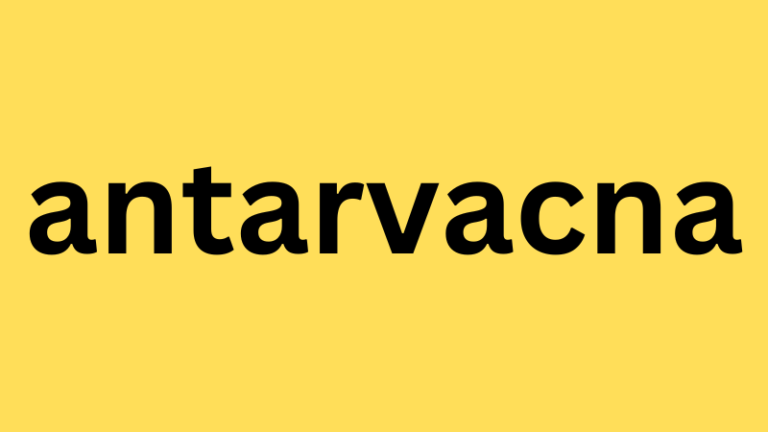http//bitly/2gxqokm: How to Use Bitly Links Safely and Effectively
At some point, you’ve probably clicked on or seen a strange link like http//bitly/2gxqokm. It looks short, neat, and easy to share. But if you’re anything like me when I first saw one, you probably also wondered: Is this safe? Where does it lead? Why don’t people just share the original link?
That curiosity led me down the rabbit hole of URL shorteners, especially Bitly, one of the most popular ones out there. Over the years, I’ve used Bitly in social media campaigns, email newsletters, and even casual chats with friends when I didn’t want to paste a long messy link. But I’ve also learned some important lessons about security, broken links, and best practices.
In this guide, we’ll explore what Bitly is, why links like http//bitly/2gxqokm sometimes don’t work, and how you can handle shortened links safely. Whether you’re a beginner who just stumbled upon this strange link or a marketer looking to use Bitly professionally, this article will walk you through everything step by step.
What is Bitly and Why Do People Use It?
Bitly is a URL shortening service. Its main job is to take a long web address and shrink it into something short, clean, and easy to share. For example, instead of sending someone:
you could turn it into something like:
Much easier, right?
When I first started using Bitly in my university days, it was mostly about convenience. I didn’t want my essays or notes cluttered with long, ugly URLs. Later, as I worked on small marketing projects, I realized that Bitly offers more than just link shortening. It also allows you to:
-
Track how many people clicked on your link
-
See where your clicks are coming from
-
Customize your short link with your own brand name
This is why Bitly is so popular among businesses, influencers, and anyone who wants to share links online in a professional way.
Why Does the Link “http//bitly/2gxqokm” Not Work?
You might have noticed that the link http//bitly/2gxqokm doesn’t open properly. There are a few possible reasons for this:
-
Typo in the URL
The correct format for a Bitly link should includehttps://. Without it, most browsers won’t recognize the link. So instead ofhttp//bitly/2gxqokm, it should behttps://bit.ly/2gxqokm. -
The Link is Broken or Deleted
Sometimes the original link that the Bitly URL points to has been deleted or the user who created it has disabled it. In that case, you’ll see an error when you try to open it. -
Expired or Suspicious Link
Bitly occasionally blocks links that lead to unsafe or spammy websites. So if the shortened link was flagged, it won’t work anymore. -
Copy-Paste Errors
I can’t tell you how many times I copied a shortened link and accidentally left out a letter. Because these links are case-sensitive, even a small typo can break them.
If you’ve ever clicked a Bitly link only to end up at an error page, don’t worry. It happens more often than you think.
The Risks of Shortened Links
While Bitly is a great tool, it’s not without risks. I learned this the hard way once when I clicked on a shortened link in a forum and it redirected me to a sketchy website full of pop-up ads.
Here are some common risks:
-
Lack of Transparency
With a short link, you don’t see the full destination. This makes it easier for scammers to hide phishing websites behind clean-looking links. -
Expired Links
As we just covered, links can break or expire, leading to frustration. -
Malware and Spam
Some attackers use short links to trick people into downloading harmful software.
That doesn’t mean you should avoid Bitly altogether. It just means you should take some precautions before clicking on any shortened link.
How to Safely Open or Expand a Bitly Link
Whenever I see a new Bitly link, I don’t rush to click it. Instead, I check where it leads first. Here are a few ways to do this:
-
Use Bitly’s Preview Feature
You can preview a Bitly link by adding a+sign at the end. For example:This shows you the destination before you click.
-
Use Link Expander Tools
Websites like CheckShortURL.com let you paste a shortened link and reveal the full URL. -
Look at the Source
If the link comes from someone you don’t trust, don’t click it. If it comes from a reputable brand or friend, you’re probably safe. -
Use Antivirus or Browser Security
Most modern browsers already block dangerous websites. Still, having good antivirus software gives you extra peace of mind.
How to Create Your Own Bitly Link (Step by Step)
I remember the first time I created my own Bitly link for a small blog I ran. I felt strangely professional. The process is very simple:
-
Go to bitly.com and create a free account.
-
Paste the long URL you want to shorten.
-
Bitly will generate a short link for you instantly.
-
(Optional) Customize your link with a unique ending or your brand name.
For example, instead of bit.ly/xyz123, you could make it:
That’s cleaner and more trustworthy.
Tracking and Analyzing Your Bitly Links
One of the coolest things about Bitly is its built-in analytics. When I used Bitly for a small campaign, I was surprised to see people clicking from countries I didn’t even expect.
With a free account, you can track:
-
Number of clicks
-
Where the clicks are coming from (geography)
-
Which platform people clicked from (Twitter, Facebook, etc.)
This data can help you understand your audience better and improve your marketing strategy.
Alternatives to Bitly
While Bitly is popular, it’s not the only option. Depending on your needs, you might want to try:
-
TinyURL – Simple and reliable, no account needed.
-
Rebrandly – Great for branding, lets you use your own domain.
-
Short.io – Offers more advanced analytics and customization.
I personally use Bitly for casual use, but for branding, I’d go with Rebrandly.
Best Practices for Using Shortened Links
If you’re going to use Bitly or any other shortener, here are some tips I’ve learned over the years:
-
Always use HTTPS links for security.
-
Customize your links so people trust them more.
-
Don’t shorten shady links just to make them look clean. It hurts your credibility.
-
Use analytics to learn from your audience.
-
Test your link before sharing it widely.
Conclusion
The link http//bitly/2gxqokm might not work, but it’s a great starting point to talk about Bitly and how shortened links work. URL shorteners are convenient, powerful, and useful for both casual users and businesses. At the same time, you need to be cautious and check where links lead before clicking them.
Personally, Bitly has saved me from many awkward situations of pasting giant links in emails or posts. It’s also taught me to be more mindful of online security. As long as you use it wisely, Bitly can be a great tool.
FAQs
1. Why does http//bitly/2gxqokm not open?
Because the URL is incomplete. The correct format should include https://. It may also be broken or deleted.
2. Is Bitly safe to use?
Yes, as long as you’re cautious. Always preview or expand links before clicking if you don’t know the source.
3. Can I create free Bitly links?
Yes. A free account lets you shorten and track links. Paid plans add more features.
4. What are the best alternatives to Bitly?
TinyURL, Rebrandly, and Short.io are popular choices.
5. How do I preview a Bitly link before clicking?
Add a + at the end of the link to see its destination.






